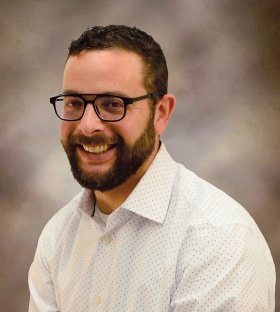Research News
UB research lab studies how university courses can be more ‘open’

The Graduate School of Education's Open Education Research Lab's core mission is to actively engage and support the study of SUNY’s open education efforts.
By CHARLES ANZALONE
Published July 17, 2018 This content is archived.
The Graduate School of Education has joined the SUNY-wide effort to reduce the costs of higher education by launching an Open Education Research Lab dedicated to replacing high-priced textbooks and other costly materials by studying the use of open or free educational materials that can be downloaded, edited or shared.
“Open educational resources (OER) have all the advantages of a Wikipedia, another open resource, but are designed specifically for students and instructors to use in their courses,” according to Sam Abramovich, director of UB’s Open Education Research Lab and assistant professor in the Graduate School of Education.
The UB effort aligns the university with a statewide effort to enhance and extend the use of these open educational resources. The New York State budget has allocated $16 million for these resources in the last two years.
“Open educational resources are educational resources that are similar to any other, such as textbooks, presentations and assessments, but are free to use by anyone for any purpose,” says Abramovich, whose work on emerging technology for instruction and assessment has included using open digital badges to motivate learning.
“But what makes an educational resource ‘open’ is that it is licensed to not only be free, but it can also be modified or changed by anyone, and then redistributed afterward.”
Abramovich called this “open” educational technology “potentially ground-breaking” because it first makes free educational materials available to all students.
“Having free textbooks is already a tremendous benefit for college students,” he says. “It’s especially important for anyone who is receiving student loans or paying for college while paying other bills.
“When the average student pays more than $500 a year for course materials, this cost savings could literally be the difference between making college an option versus just a dream.”
But OER is more than just distributing free books and online materials, Abramovich says.
“What’s even better than being free is that open educational resources are licensed to guarantee everyone free use of these materials and the right to modify or change them,” Abramovich says. “If a professor found a good open textbook but it had some out-of-date information, they can change it and then share the newly updated version. This is especially critical in subjects that are rapidly changing.
But just like Wikipedia, there could be potential negatives to using open resources, according to Abramovich.
“Many people are afraid of Wikipedia because they believe that anyone can just change that website,” he says. “But Wikipedia not only has safeguarding editors, most empirical studies say that it’s as accurate as any encyclopedia. The same could be applied to open educational resources, with the same benefits.”
UB’s Open Education Research Lab will study how to improve open education technology and practices, and help SUNY educators better use this technology, Abramovich says.
“The investment and development of OER is in addition to UB and SUNY efforts in other open educational technologies, such as open digital badges (micro-credentials) and massive open online courses (MOOCs),” says Abramovich. “UB is rolling out a micro-credential system this fall, which uses open digital badge technology to offer proof of learning that is much more specific than a degree or certificate. And many SUNY campuses already offer access to MOOCs so that non-traditional students have scalable learning opportunities.”
UB’S Open Educational Research Lab has the ambitious goal of studying SUNY’s systemic open education efforts and then making learned lessons available to all.
“There are so many interesting and effective uses of open education technology in SUNY,” says Abramovich. “But we need better ways to understand what those are.
“For example, we recently published an article where we looked at student and faculty perceptions of OER, and while almost everyone thought that OER helped with learning outcomes, some people still had reservations about whether an OER is worth the same as a traditional resource,” he explains. “A college or university that wants to use OER may need to address that concern, especially if people think that using an OER changes the value of their college education.”
“Eventually, if we can look at open education holistically, not only can we compare and contrast different efforts and learn from each other, but we can even help other states that are also considering open education.”
Other current research efforts by the UB lab include studying how an OER compares to traditional resources when the method of instruction is the same, as well as a study on how micro-credentials can be deployed at a larger public educational institution.
